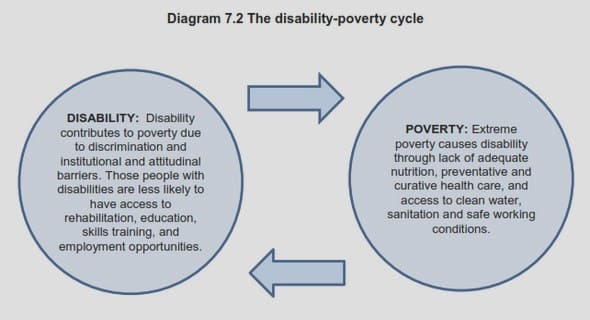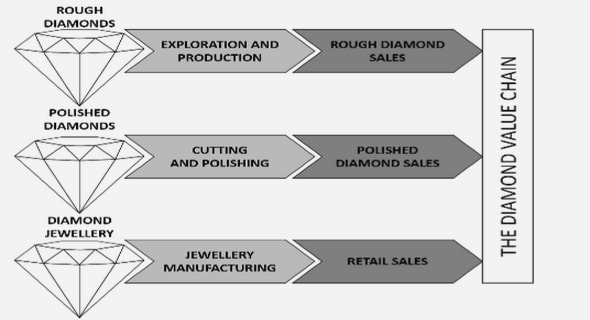Get Complete Project Material File(s) Now! »
Sheep domestication
Domesticated approximately 10 000 years ago in the Anatolia region, sheep were first hunted by humans and over time became managed wild populations, then herded, and finally humans began to manage sheep breeding (Zeder 2008; Larson & Burger 2013). Today domestic sheep (Ovis aries) are a separate species from their progenitor, the Asian Mouflon (Ovis orientalis), which still exists to this day in south west Asia (Hiendleder et al. 2002). Sheep and goats were the first domesticated livestock species and since that time have spread around the globe: in Europe, there were two main routes of domestication that followed the Neolithic expansion of plant domestication (Zeder 2008).
Animals adapted to being kept by humans show changes in behaviour and morphology (Mignon-Grasteau et al. 2005) as seen in sheep. Around 200 years ago sheep breeds began to be formed which led to fragmented populations and reduced genetic diversity (Taberlet et al. 2008). A few decades ago modern artificial selection began to further reduce genetic diversity (Taberlet et al. 2008). Today, sheep are raised and bred for: meat, milk, or fibre production; conservation purposes; or a combination of purposes. Sheep are found in extensive and intensive production systems and in hot to cold environments. Sheep also face challenges with coping with different diseases in different environments (FAO Commission on Genetic Resources for Food and Agriculture 2015).
Genetic diversity
Genetic diversity is defined as the variety of alleles and genotypes present in a population (Frankham et al. 2002). Conserving genetic diversity in livestock is important for improving production and quickly meeting future challenges including food security, increasing demand for animal products, changing environments and emerging diseases (Groeneveld et al. 2010; Barker 2001). Every breed has a unique set of gene combinations which is due to: mutation and drift from geographic isolation and bottlenecks; artificial selection and adaption to climate; available nutrition; and diseases and parasites (Barker 2001). More homogeneous breeds with improved production and fixation of traits (such as coat colour) are a result of: pedigree recording, the formation of breeding organizations, advances in technology making the transportation of animals and the dissemination of genetic material easier, and more controlled production environments (FAO Commission on Genetic Resources for Food and Agriculture 2015; Groeneveld et al. 2010). Highly productive breeds have been replacing local breeds and unique gene combinations from some local breeds are being lost (Groeneveld et al. 2010).
Maintained genetic diversity is important for adapting quickly to challenges (Andersson 2012). Natural and artificial selection pressures on sheep leading to their adaptation to different demands and environments makes domesticated sheep an interesting model species to study the evolution of populations (Andersson 2012). In addition, although not a focus of this thesis, local breeds have adapted to specific locations for thousands of years and are closely tied to culture and history and maintaining and studying genetic diversity of these breeds will help with understanding human history (Gandini & Villa 2003).
In order to maintain genetic diversity, it is important to measure and monitor it. One challenge with studying genetic diversity is the variety of methods, each with its advantages and disadvantages (which will be further reviewed in the discussion). In this thesis, genetic diversity was studied using methods to estimate inbreeding using pedigree or microsatellite genotypes, endogenous retrovirus retrotypes to study population structure, sequencing of genes under selection (coat colour genes ASIP and MC1R) and high density SNP genotypes to study population structure and signatures of selection.
ASIP and MC1R
Selection on coat colour happens early in domestication of animals because: coat colour and pattern variation appears rapidly; natural selection against variation in coat colour and pattern relaxes; and humans select animals with unique coat colours and patterns (Andersson 2001; Linderholm & Larson 2013). Over 300 genetic loci at over 150 genes affecting coat colour and pattern have been identified in mammals (Hubbard et al. 2010; Cieslak et al. 2011). In sheep, coat colour and pattern are a result of pigmentation of wool fibres with melanin. Cells called melanocytes produce two different types of melanin which are transported in granules called melanosomes (Birbeck et al., 1956). Eumelanin or pheomelanin is produced after the binding of a melanocortin agonist or antagonist agouti signalling protein (ASIP) respectively to the melanocortin 1 receptor (MC1R) (Ducrest et al., 2008). Melanosomes transfer melanin to keratinocytes, a predominant cell type in the outer layer of skin (Birbeck et al., 1956) and keratinocytes can then incorporate melanin into fibre growth (Forrest et al., 1985). In a study of Asiatic sheep, white animals did not have any pigment type (eumelanin or pheomelanin), tan animals had small amounts of pheomelanin, light red, brown, red and dark brown animals had some combination of eumelanin and pheomelanin, and black individuals only had eumelanin present in their wool (Aliev et al., 1990). Even though sheep show a wide variety of coat colours and patterns, they are a good model for studying coat colour and pattern because many breeds are fixed at coat colour alleles.
Genome wide linkage, association and selective sweep studies in sheep have identified many candidate genes associated with coat colour and pattern in sheep including ASIP, EDN3, KIT, KITLG, MC1R, MITF, SOX10, and TYRP1 (Kijas et al. 2012; Fariello et al. 2014; M.-H. Li et al. 2014). In addition, causative mutations have been identified in ASIP, MC1R and TYRP1 (Norris & Whan 2008; Smit et al. 2002; Fontanesi et al. 2011; Våge et al. 1999; Våge et al. 2003; Gratten et al. 2007). In ASIP, the white allele is an approximately 190 kbp tandem duplication which includes ASIP, AHCY and ITCH (Norris & Whan 2008), the recessive black allele is caused by either of two mutations, g.100-105del and g.5172T>A (Smit et al. 2002; Norris & Whan 2008), and the grey allele is caused by a different form of the duplication causing white coat colour (Fontanesi et al. 2011). In MC1R there is the dominant black allele which is caused by either of two mutation c.218T>A and c.361G>A (Våge et al. 1999; Våge et al. 2003). Not only does studying coat colour help determine the function of genes, but mutations associated with coat colour and pattern in modern animals can inform on population history: MC1R variation in Tibetan and Landrace pigs showed different levels of variation reflective of the different selection pressures (Liu et al. 2016); domestic chickens are descended from red jungle fowl however show some hybridization with grey jungle fowl because of variation in BCDO2 (which is responsible for yellow legs in domestic chickens and grey jungle fowl) (Eriksson et al. 2008); and the Franches-Montages horse breed has a unique mutation for white coat colour traced to a horse born in 1957 (Haase et al. 2007).
Swedish sheep
Four of the five papers in this thesis focus on Swedish sheep breeds. These breeds belong to a group of sheep called the north European short-tailed sheep. These breeds are characterized by their short fluke shaped tails, variation in coat colour and pattern, their primitive phenotypes, dual-coated wool, robustness and prolificacy (Dýrmundsson & Niżnikowski 2010). North European short-tailed sheep were spread by Norse Vikings from the eighth to the middle of the eleventh century and now cover an area from Russia to Iceland (Dýrmundsson & Niżnikowski 2010). In studies estimating genetic diversity using microsatellite genotypes, north European short-tailed sheep, including some Swedish breeds, have been shown to be unique, with some breeds contributing more than expected to overall domestic sheep diversity, although many of these populations have small effective population size and have low within breed diversity (Tapio et al. 2005).
Some of these (but not any Swedish) breeds were also included in the Sheep HapMap project where breeds from around the world were genotyped using a medium density SNP array with the data (available from http://www.sheephapmap.org). Many of the north European short-tailed sheep breeds today are local breeds having adapted to specific areas. In Sweden these small local populations are recorded and maintained as separate heritage breeds (Dýrmundsson & Niżnikowski 2010). Genetic diversity has been studied in some of these breeds including using microsatellite markers comparing north European short-tailed sheep (Tapio et al. 2005) and northern Eurasian breeds (Tapio et al. 2010). Two breeds (Gotland and Rya) were included in a study of retroviruses in some European, Asian and African breeds (Chessa et al. 2009). North European short-tailed sheep were also included in studies of inheritance of coat colour alleles including Gotland and Gute sheep that were believed to have two grey alleles different from the grey allele segregating in Icelandic sheep (Adalsteinsson et al. 1978).
French sheep
Sheep raised in France are a heterogeneous group: France borders many of the geographic areas associated with western European sheep population groups of the Sheep HapMap dataset (Kijas et al. 2012). The two French breeds included in this study were Lacaune and Rambouillet sheep, both of which belong to the Mediterranean sheep group (Kijas et al. 2012). In a recent study of 49 sheep breeds raised in France, population structure was studied using microsatellite genotypes and researchers confirmed that French sheep breeds show a structure consistent with influences from both Northern Europe, specifically British breeds, and southern European breeds (Leroy et al. 2015). The study of French sheep diversity should therefore provide valuable insights on the establishment of genetic structure in European sheep, and in particular inform us on the history of sheep husbandry in Europe as they are likely to harbour a large part of European sheep diversity in a relatively small geographical region.
Gaps in knowledge
Sheep are a good model for studying adaptation and there are many unique breeds in Sweden and France that could offer more insight into genetic diversity and adaptation. More detailed information on population structure and genetic diversity of many of these breeds would assist to fill current gaps in knowledge. Especially in concern with the need to maintain genetic diversity to be able to meet future demands quickly and with breeds that are being kept for conservation purposes. Therefore the study of Swedish and French breeds is especially interesting as they cover a wide range of environments. Finally, high density data allows for comparisons with other world-wide breeds which allows for even further studies and comparisons of population structure.
Table of contents :
1 Introduction
2 Background
2.1 Sheep domestication
2.2 Genetic diversity
2.3 ASIP and MC1R
2.4 Swedish sheep
2.5 French sheep
2.6 Gaps in knowledge
3 Aims of the thesis
4 Summary of studies
4.1 Materials and Methods
4.1.1 Estimation of genetic diversity in Gute sheep: pedigree and microsatellite analyses of an ancient Swedish breed
4.1.2 The use of endogenous retroviruses as markers to describe the genetic relationships among local Swedish sheep breeds
4.1.3 Mutations in ASIP and MC1R: Dominant black and recessive black alleles segregate in native Swedish sheep populations
4.1.4 Revealing the selection history of adaptive loci using genome-wide scans for selection: an example from domestic sheep
4.1.5 Population structure of five native sheep breeds of Sweden estimated with high density SNP genotypes
4.2 Main findings
4.2.1 Estimation of genetic diversity in Gute sheep: pedigree and microsatellite analyses of an ancient Swedish breed
4.2.2 The use of endogenous retroviruses as markers to describe the genetic relationships among local Swedish sheep breeds
4.2.3 Mutations in ASIP and MC1R: Dominant black and recessive black alleles segregate in native Swedish sheep populations
4.2.4 Revealing the selection history of adaptive loci using genome-wide scans for selection: an example from domestic sheep
4.2.5 Population structure of five native sheep breeds of Sweden estimated with high density SNP genotypes
5 General discussion
5.1 Genetic diversity of sheep
5.2 Allelic heterogeneity
5.3 Methods
5.4 Future studies
6 Conclusions
7 Thesis summary
8 Sammanfattning
9 Synopsis de la thèse
References
Acknowledgements


